
After visiting Iceland and Greenland, our cruise through the North Atlantic continued with two sea days before we reached the coast of Canada and the island of Newfoundland. Our lecturers talked about seals (I have the perfect hat for that), puffins, and jets. What was missing were lectures on the history of the countries we were visiting. What about information on the Inuit, the Vikings, or the Norwegian or Danish explorers? But perhaps the oddest thing we did on our sea days was adjust our clocks a half hour. “When time zones were introduced in the late 19th century, Newfoundlanders chose their 30-minute offset because that was close to the local solar time in St. John’s, the city where most Newfoundlanders lived.” –-Britannica The 30-minute time difference only applies to the island of Newfoundland and not the rest of the province.

Today we dock in St. John’s in the Canadian Province of Newfoundland and Labrador. This is the capital city and the largest city in the province. It was settled by the British in the 1600s. St. John’s is also the easternmost point of Canada at Cape Spear just under seven and half miles from the city center.
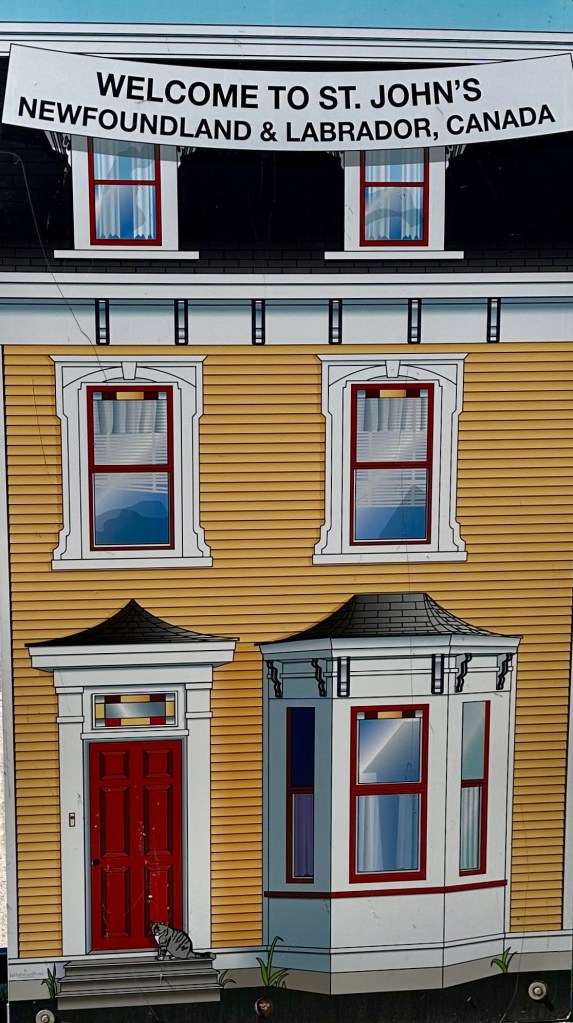
Until 1949, Newfoundland was an independant Dominion within the British Empire. It became the 10th and newest province of Canada that year. In 2021, the name was changed to Newfoundland and Labrador. The province is made up of the island of Newfoundland and the mainland region of Labrador which borders the Province of Quebec.

94% of the entire population of the province lives in Newfoundland and most of those in the capital city of St. John’s. Today the residents are of English and Irish descent. When Europeans first reached Newfoundland in the 16th century, “the Beothuk were the only indigenous group living permanently on the island.” –Ingeborg Marshall, The History and Ethnography of the Beothuk. Today, 3.2% of the population consider themselves “First Nation”.
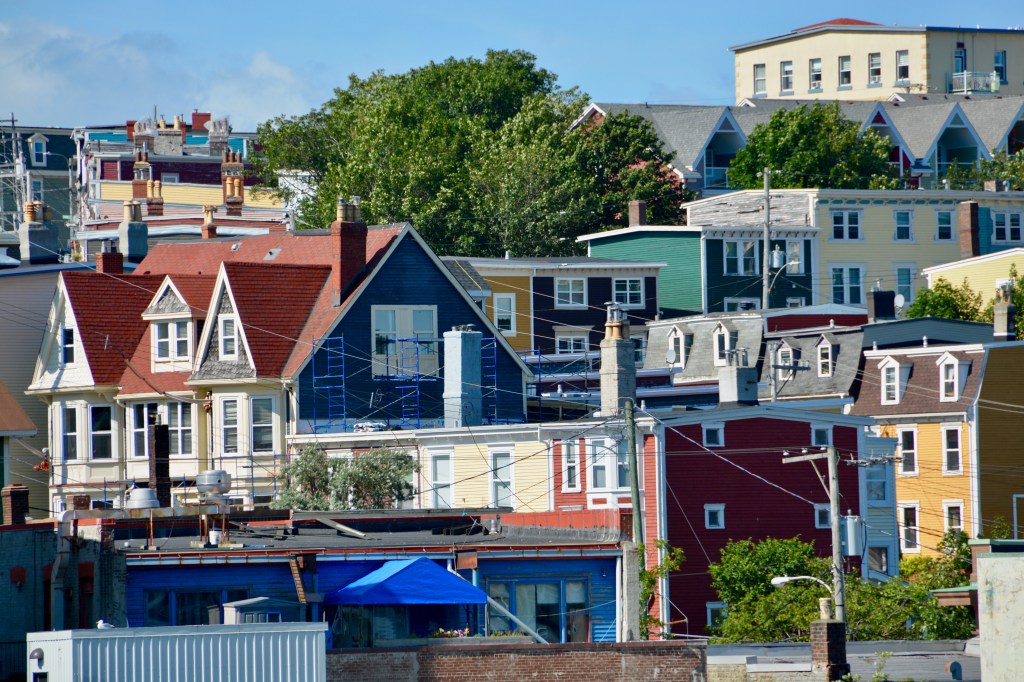
The country’s economy was quite depressed after the collapse of the cod industry in the 1990’s but the emergence of oil exploration and production, continued mining in Labrador, diversified fishing, and even some agriculture in southern Newfoundland have contributed to a stronger economy in the province today.

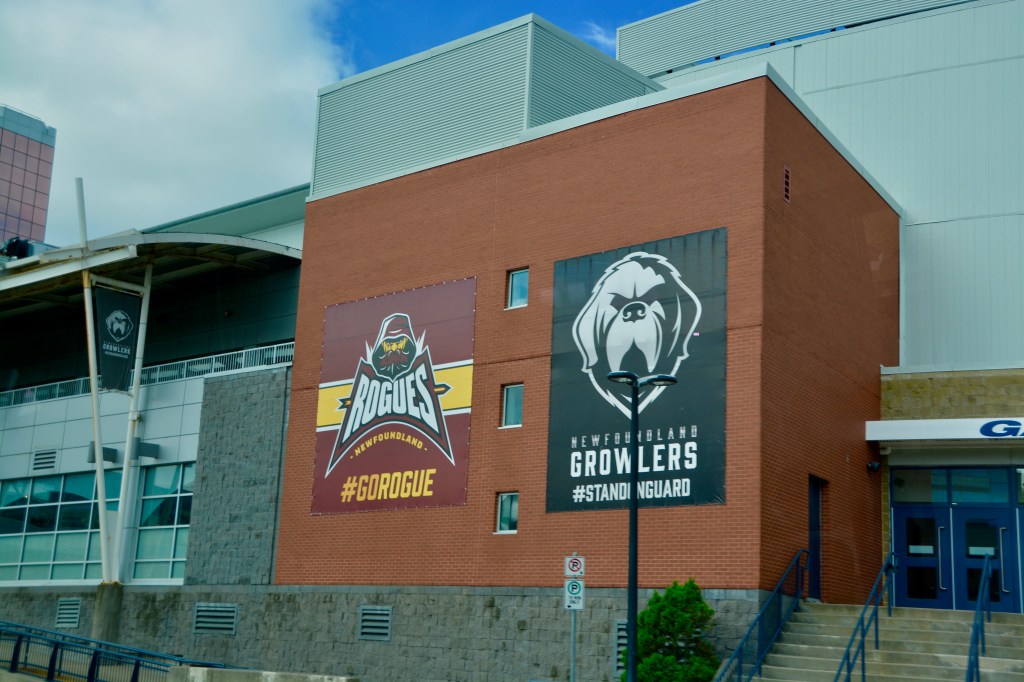
Folk music with a strong Irish influence is quite popular in the province. The culture of the region is best explored in the local museum known as The Rooms. Soccer (football) and rugby are the most popular sports, although there is a minor league hockey team The Growlers. However, if you asked our guide, he would tell you that softball is the most popular sport for men and women in St. John’s.

Today’s excursions were pretty limited and mostly sold out, so we decided to take the local hop-on/hop-off bus as we do in many cities. It was a short walk from the pier to the hotel on Water street where the first bus stop was. They were running four buses, but I think they might have underestimated the crowds. When we got there the wait for the next available bus was 50 minutes (the line was much longer when we got back). The bus got there 30 minutes early, but we had to wait for the actual departure time to leave although the bus-actually more like an extended minivan-was full. This worked in our favor since Boris decided to walk around a bit when we found there would be a wait. I grabbed a seat and he luckily made it back in time.
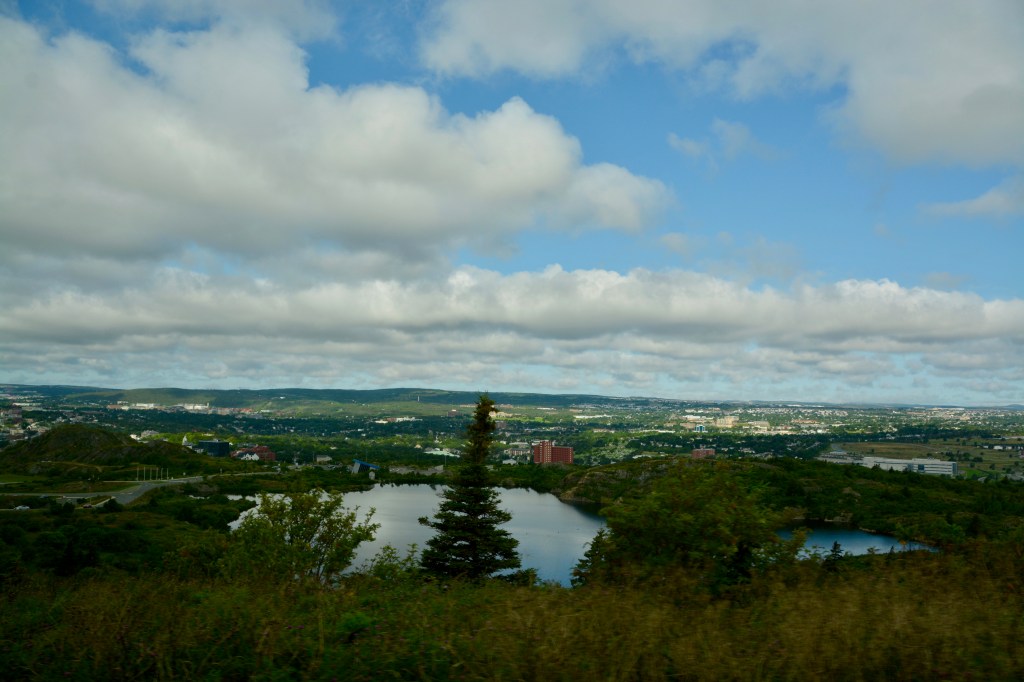
The cost was C $50 or $45 for those 55 and over $35 for those under 12. (We paid about $70 US for tickets for both of us.) The route took about an hour and a half if you just stayed on the bus. We learned pretty quickly that we needed to do that. People were very angry when our bus would reach a stop and there was no room for anyone to get on because no one wanted to get off the bus. This often happens early in the day. It is not unusual for Boris and I to do an orientation loop and then get off on the second go around.

Our first stop was Signal Hill and Cabot’s Tower. The tower was built in 1898 to commemorate the 400th anniversary of John Cabot’s landing in Newfoundland, and Queen Victoria’s Diamond Jubilee. The real significance of the tower is that this is the point where Guglielmo Marconi received the first transatlantic wireless message, the letter “S” in morse code, sent from Cornwall, England in 1901. Signal Hill was originally used for flag signaling by the British military.

Our second stop was at the Johnson Geo Center which we passed on the way up to the tower. The facility is a science center affiliated with the local Memorial University. Just FYI, the center’s Titanic exhibit is no longer there (since the COVID closure). Some guests were disappointed to get off, pay an entrance fee, and then find out the exhibit was no longer there. The center’s director actually came running out to tell our bus.

The next stop was Quidi Vidi Village, a neighborhood in St. John’s next to Quidi Vidi Lake where the Royal St. John’s Regatta is held annually. It was quite charming. If we weren’t worried about getting a seat on another bus and if it would have been late enough to grab lunch, I would have gotten off the bus. The driver/guide had been telling us all morning about the fabulous fish and chips in St. John’s. Cod is currently in season. I thought about coming back on a second loop and then taking a cab back to the ship if necessary.
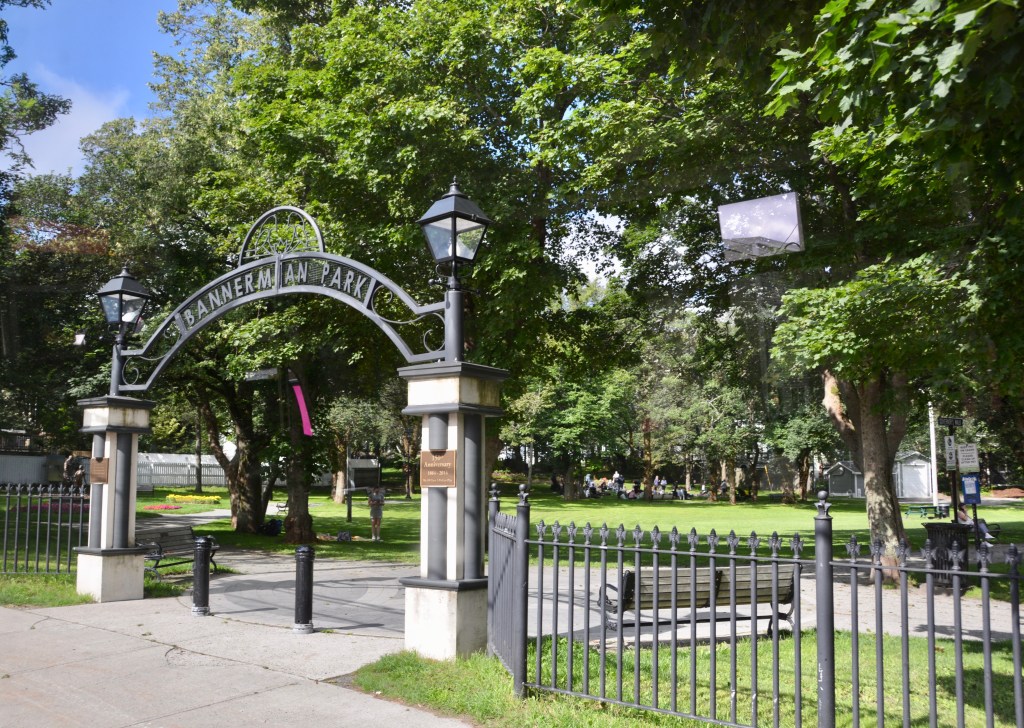
The fishing village is at the far end of the lake so we made the loop around Quidi Vidi Lake before heading back into the heart of St. John’s. Our next stop was Bannerman Park. The park includes open spaces, a children’s playground, walking trails, an ice skating trail for the winter and a pool and splash pad for the summer.

After leaving the park, we made two more stops in town at The Rooms, a recommended cultural museum, and at the Newman Wine Vaults. Then we made the drive out to Cape Spear.
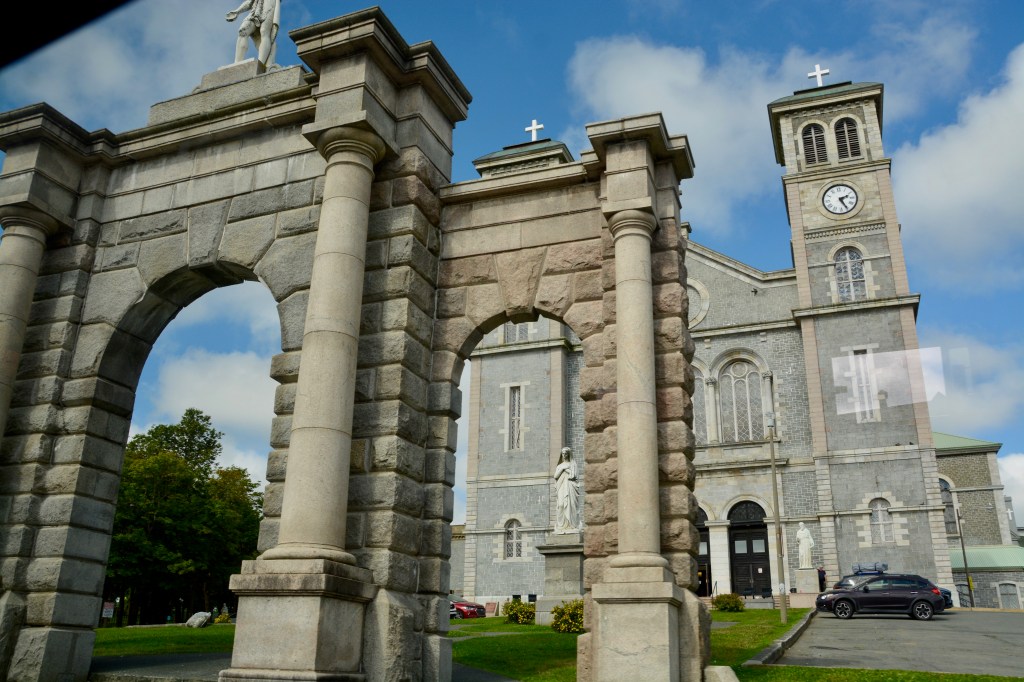

It was a nice drive along the coast out to Cape Spear, the easternmost point in Canada and North America. The Cape is not far from the heart of St. John’s, only 12 km (less than 7.5 miles) to the southeast. Just go out route 11 until it ends at the Cape.

They do a good job of marketing the Cape: “Watch the First Sunrise of North America…It’s our geographic position, jutting out into the North Atlantic that gives us the honour of receiving the sun first before anyone else on the continent. And with it comes a half-hour off-kilter time zone and, some would say, an extra half hour in the morning. It’s safe to say, though, that firsts are nothing unusual around here. Suffice it to say, as one of the oldest cities in North America, we’ve seen more than our fair share in the last 500 years. To name a few:
We were the first to respond to the RMS Titanic’s distress signal that fateful night in 1912. The first non-stop transatlantic flight took off from St. John’s in 1919. And wireless communication was received here first when the letter S was transmitted from Cornwall, England to Signal Hill, St. John’s. As monumental as these historical moments may be, if you find yourself standing here at the edge of the continent at first morning light, you’ll likely be a little preoccupied.” —NewfoundlandandLabrador.com.
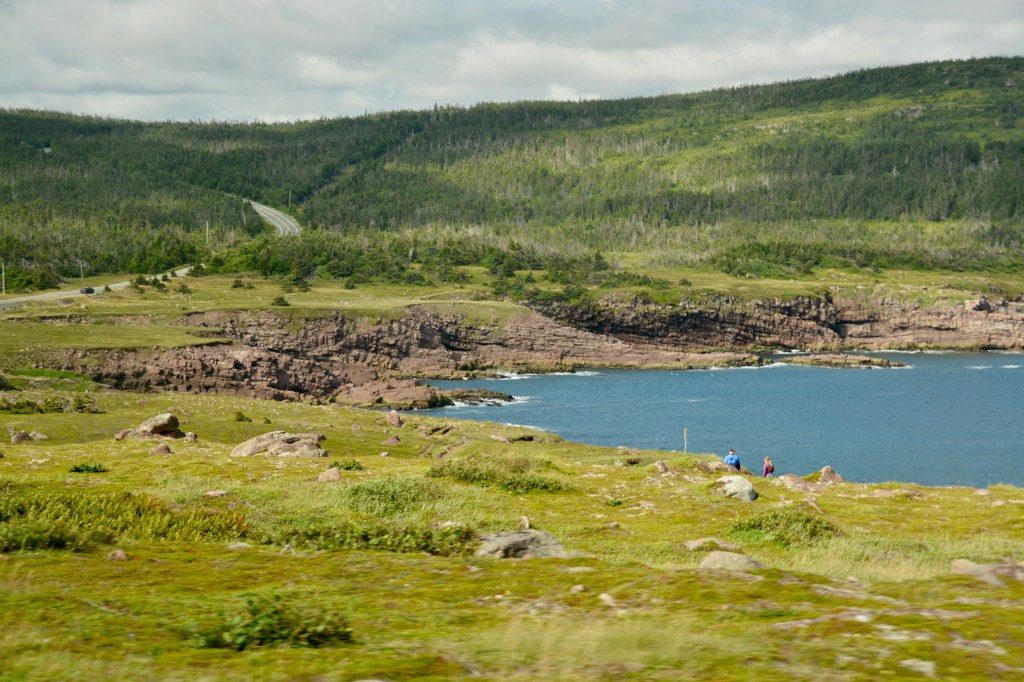

On the way back into town, we made an unscheduled photo stop and had a nice view of the city from our elevated position. Then we drove right by the next stop, The Railroad Museum At the final stop, our driver had to recommend to those waiting that they go to the first stop because the bus was full.

Even though we could have stayed on the bus, there were so many people in line that Boris and I decided to get off and give someone else a chance to see the sights. We decided to walk around town, maybe find one of the pubs the guide recommended, and check out the local fish and chips during cod season.


The pedestrian street was only one block up and we loved the charming building facades and the tables that had been placed in the middle of street so you could take a break or enjoy food or drink from a shop/cafe or food truck.


Our guide had recommended several cafes and pubs for excellent fish and chips. The first one we came to was out of business and second one was the Yellowbelly Brewery and and Public House. It had that traditional pub look and a line that said it had been recommended. I had talked to a girl on the bus (one of few that got a seat when some people got off at Cape Spear) who had been in St. John’s a week and this was the place she ate at several times. We felt pretty safe giving it a try.

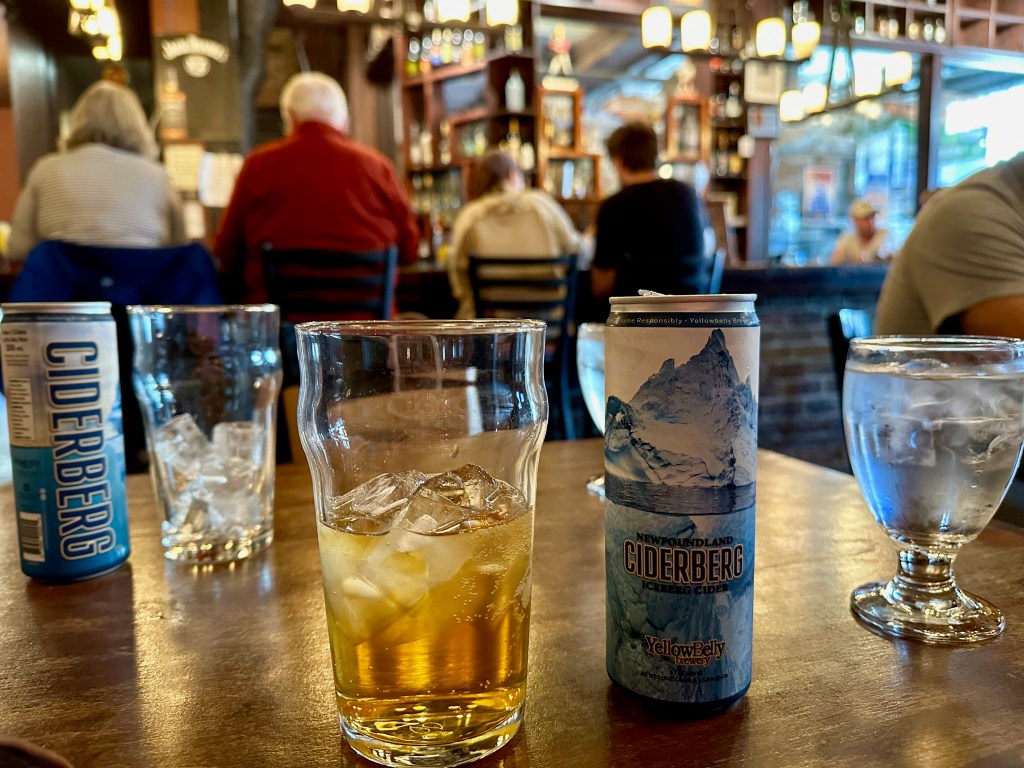
We put our names on the list and went and did a little shopping. I found some cute puffin stuff and Boris got a hat, although I am not sure when he is going to wear this one. When we got back to Yellowbelly, we didn’t have long to wait for our table. We both ordered the cider. Unfortunately they didn’t have any on draft but we got one in a can made from glacier iceberg water. We ordered onion rings as an appetizer and fish and chips for lunch. Unfortunately, it was all awful. Sorry can’t recommend anything we got here, not even the cider. Cool building though.


After lunch, we wandered around town, into a few more shops, and then back to the ship. It had become a warm, sunny day and I was definitely overdressed at this point. When we reached the pier, I could hear a bagpipe. I looked around until I spotted a guy just standing in a parking lot playing the instrument. At least he was dressed for the weather.
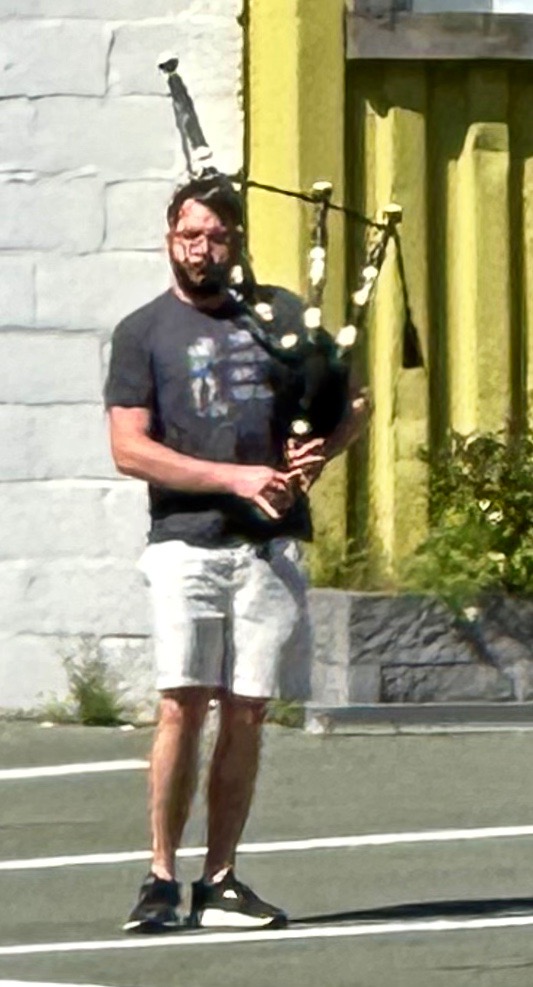

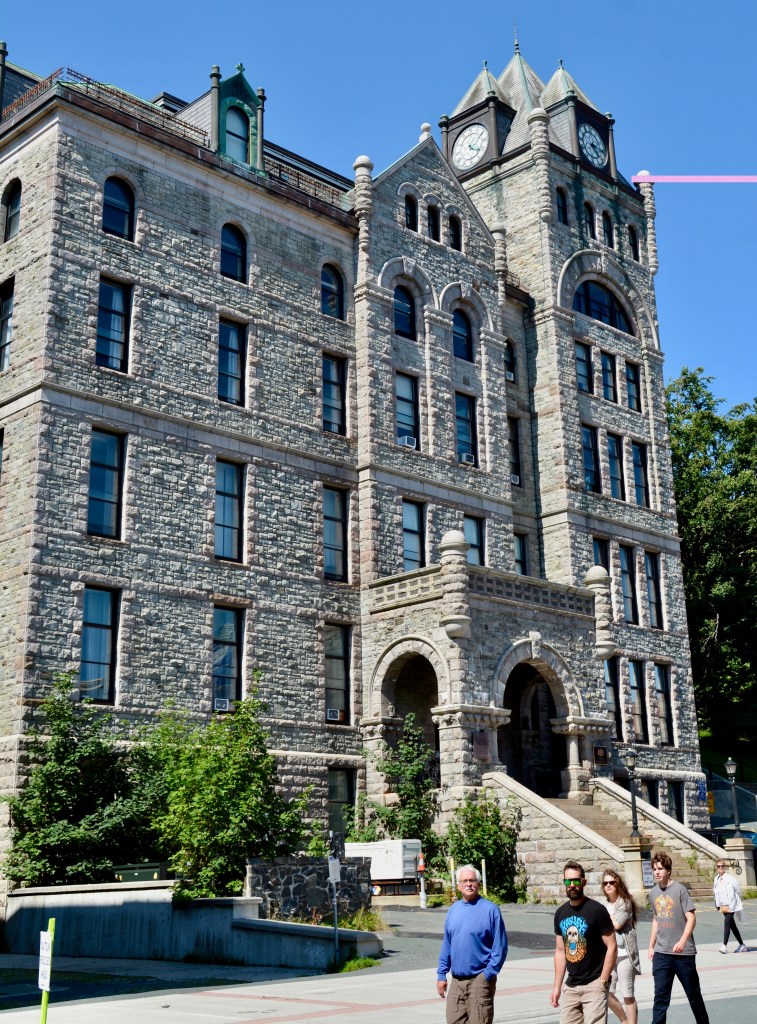
Once I got back on the ship, I changed into something cooler. From our cabin balcony, I had a great view of the city, the goings on, and the colored row houses all over the town. We had a fun day in St. John’s, Newfoundland and Labrador, Canada.

During dinner we had a great view of Signal Hill and the coastline of Newfoundland as the ship departed. On to another Canadian province as we head to Halifax, Nova Scotia.


–Natasha
